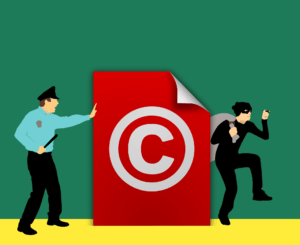 When it comes to original work that you’ve invested your time and talent into creating, it’s no wonder that you want to protect it. Taking the time to get a copyright doesn’t guarantee that nobody will try to copy or profit from your creation, but it does provide you with the ability to file a copyright and trademark infringement lawsuit stopping their activities and seeking monetary damages for the losses you’ve suffered. Though it may seem impossible to put a value on your damages, the truth is that there are three legal theories established specifically to help with calculating your loss. These three theories are:
When it comes to original work that you’ve invested your time and talent into creating, it’s no wonder that you want to protect it. Taking the time to get a copyright doesn’t guarantee that nobody will try to copy or profit from your creation, but it does provide you with the ability to file a copyright and trademark infringement lawsuit stopping their activities and seeking monetary damages for the losses you’ve suffered. Though it may seem impossible to put a value on your damages, the truth is that there are three legal theories established specifically to help with calculating your loss. These three theories are:
- Statutory damages
- Profits
- Actual damages
As the name suggests, statutory damages are those that the law has established to address infringement of a work registered with the U.S. Copyright Office. If infringements can’t clearly be proven, the damages range between $750 and $30,000 per infringement, depending on the seriousness of the infringement and the assets that the infringer has. Though an innocent infringer may be charged a token amount, intentional infringers have been known to be required to pay as much as $150,000 for a single instance of infringement. What complicates this issue is the requirement that the work must have been registered either before the infringement takes place or within three months of the work’s publication, so it is essential that you take the necessary steps to put a copyright in place.
Though statutory damages are established by law, the victim of copyright infringement can choose to seek actual damages instead of statutory damages. Actual damages represent the actual loss that the owner of the work suffered as a result of the wrongdoing, either in the form of lost sales or licensing revenue, or any other type of loss that can be proven. Actual damages are usually calculated by forensic accountants or via testimony by another expert witness.
Finally, a victim of copyright and trademark infringement can seek to capture the profits that the infringer has gained as a result of their illegal activities. This option is only available if the infringer’s profits are more than the actual damages that the victim can prove that they suffered.
Though copyright laws can be complicated, protecting the integrity of your creation is important. For information on the steps you need to take to protect your work by registering a copyright or pursuing an infringer of your copyrighted work, contact our office today.

